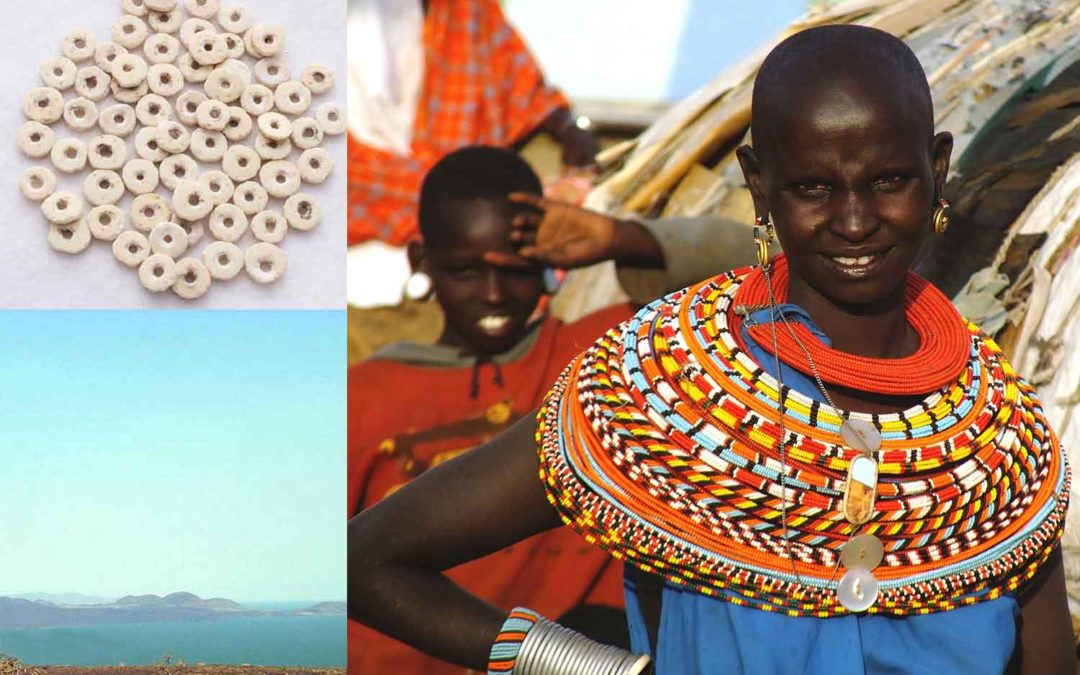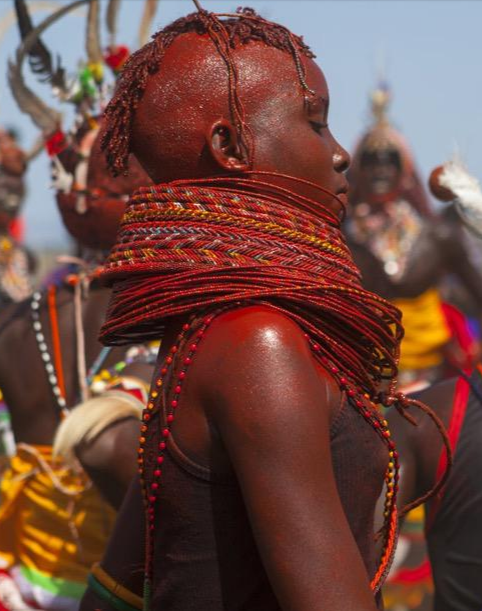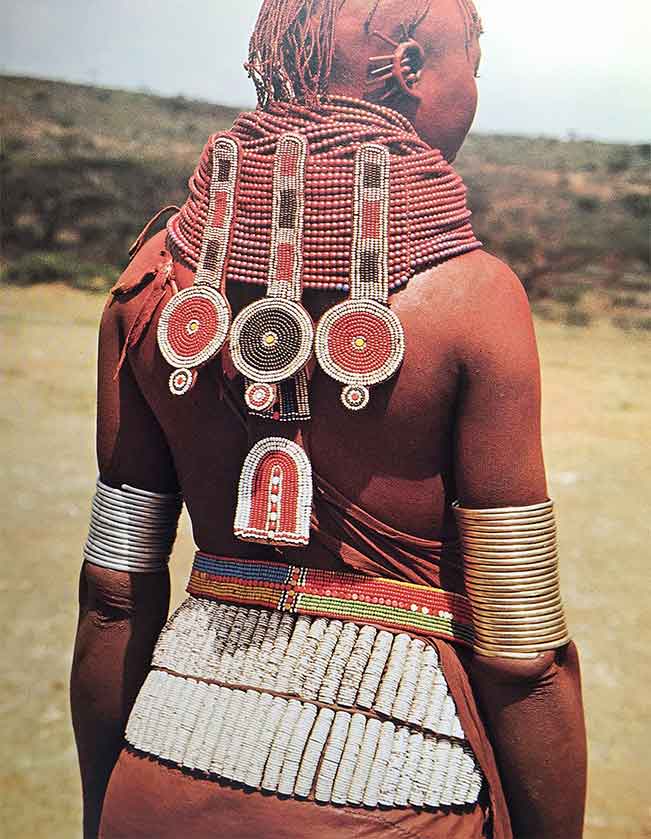Turkana Beaded Jewellery and Fascinating Traditions

The 18th of April every year marks World Heritage Day (International Day for Monuments and Sites) which presents an opportunity to appreciate World Heritage Sites scattered across the world with each exhibiting various levels of uniqueness from both cultural and natural standpoints.
Apart from the geographical features and architectural masterpieces that has made some of these locations famous as World Heritage Sites, it is interesting to note that some are home to adornment which have greatly influenced modern jewellery styles.
We flashed a light on Lake Turkana in a post last year to see what made it a World Heritage Site. This year, let’s take a look at the fascinating lifestyle of its inhabitants as we explore their love and knack for Turkana beaded jewellery.
First, a little recap.
Turkana
Turkana County is located in northern Kenya about 700km from the capital, Nairobi. Its inhabitants, popularly called the “Turkana Tribe”, live in one of the most inhospitable places on earth with the likelihood of daytime temperature climbing to about 45 degrees celsius and black volcanic rocks littering the ground. They are nomadic pastoralists and are known for the high value placed on beaded ornaments.
10 odd and interesting facts that you probably didn’t know about the Turkana people
- Turkana women wear beads which could weigh up to 5kg and never take them off except when mourning or in an event of ill health. In fact, women who don’t wear beads are avoided by men of the tribe.
- Men and women wear earrings made of aluminium, which are made exclusively by the men.
- Beaded jewellery is highly valued and is believed to be a symbol of wealth. A typical Turkana man will do all he can to ensure female members of his family are well adorned in an impressive array of beads.
- Older Turkana women wear labrets which pierce their lower lips as a matter of tradition.
- Instead of wedding rings, married women wear plain metal rings around their necks.
- Dog dung is used as a lubricant to prevent beaded necklaces from chafing the neck.
- Women use animal fat to protect their bodies from the intense heat of the sun.
- Due to the arid nature of the area, water is a luxury and it is only used for drinking. Therefore, the Turkana people clean their bodies by rubbing fat or butter over their skin. The women take this further by adorning their bodies using grease paint made from animal fat and red ochre.
- All Turkana people have their lower incisors removed from childhood.
- Men wear elaborate mudpack hairdos decorated with ostrich feathers to indicate elderly or warrior status.
Discover more from photographer Eric Lafforgue’s encounter with the Turkana people including his incredible images capturing these people here.

Turkana Beaded Jewellery
There are a number of jewellery styles and designs that are unique and native to the Turkana people. Here are just a few:
- Turkana Tribal Beaded Necklace: This native necklace comprises over 2,000 beads arranged in several layers to form a loop around the wearer’s neck. The beads could be different coloured, but in most cases, colours are not mixed in the same design.

- Turkana Clay Necklace: This type of ancient adornment is still popular among Kenyan women. Beads are made from locally sourced clay, shaped into cubic or rounded pieces and finished with clear lacquer to enhance the clay’s natural colours. The clay beads are strung onto a cord at intervals and worn as a necklace.
- Turkana Beaded Bangles: These usually consist of over 500 beads, differently coloured and elegantly handcrafted to produce spherical layers.
- Ostrich Eggshell Bead Jewellery: Ostrich eggshell beads are the oldest known man-made bead, with findings of these beads dating back to around 70,000 B.C. during the African Middle Stone Age. They are a popular form of adornment amongst the Turkana, and tribeswomen make them by chipping the tough shell into rough shapes using stones or their teeth. Find out more about this incredible beads here.
- In spite of the tradition of beaded jewellery amongst the Turkana people dating back many years, it is highly encouraging to see this being preserved to this day. Indeed, jewellery is a wonderful lens through which to learn about different cultures, be inspired by the diversity of styles, and adapt it for your modern day wardrobe: a fashionista’s motivation for celebrating World Heritage Day!Wondering what classifies a place as a World Heritage Site? Find out here.
